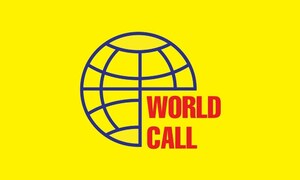Writing in the wake of the Global Financial Crisis (GFC) in 2009 in a Project Syndicate published article ‘The new IMF’, the then executive director of the International Monetary Fund (IMF, or more simply ‘Fund’), Age Bakker commended the IMF for coming up with ‘flexible lending policies’ especially with regard to introduction of ‘a new non-conditional credit line… for well-performing countries’, but he asked the Fund to have a balanced approach towards its member countries as ‘The ‘new’ IMF should be an institution that communicates better with its members, balances the interests of its advanced, emerging and developing members in an even-handed manner, and aligns its policies better to the needs of the moment.’
The Covid-19 pandemic and the global recessionary spiral on account of that have placed greater financial burdens on developing and emerging economies in particular. An important step in assisting countries by the IMF was in the shape of recently released SDRs to the tune of $650 billion, yet the needed balance in terms of allocation could not be achieved, whereby a major portion went to advanced, rich countries since the usual quota sharing mechanism was strictly followed. Having said that, the delay in release of such support is indeed regrettable, since it arrived almost one-and-a-half years after the official announcement of the outbreak of the pandemic by the World Health Organization (WHO).
A recently released report ‘Handbook for the use of special drawing rights (SDRs) for fiscal purposes’ by Latin American Network for Economic and Social Justice has pointed out in this regard the following: ‘the decision to issue $650 billion in Special Drawing Rights (SDR) is bittersweet news: on the one hand, it is the recognition of the seriousness of the crisis and the need for a unified plan on the international agenda, but on the other hand it leaves the unpleasantness of being insufficient, untimely and with prospects of deepening inequality if other corrective measures are not taken. For example, 2/3 of these resources will be directed to countries that do not need them, so they should be reallocated.’
The Economist in its recent Espresso morning brief titled ‘A lot better than nothing: special drawing rights’ pointed out in this regard: ‘The IMF expects the allocation to provide relief to poor countries struggling to support fragile currencies and pay for imports. But the aid is of a modest sort. SDRs are doled out broadly in proportion to countries’ contributions to the IMF, meaning most will go to rich economies.’ So just like the issuance of SDRs in 2009, where out of allocated $250 billion worth of SDRs, the majority of it ($132 billion) went to rich, advanced countries; only $18 billion was received by low-income countries and $100 billion by developing countries and emerging economies. Similarly, the majority shares of SDRs have been received by rich, advanced countries in the recent allocation of $650 billion worth of SDRs.
Notwithstanding that allocation should have adopted a special quota regime so that more deserving countries in terms of financial need obtained the lion’s share of this allocation, it would make sense that rich, advanced countries reallocate as much as possible, if not all, SDRs allocated to them to poor, developing countries, and emerging economies. Already, the allocation of $650 billion is losing its gloss owing to a variety of factors. An added or new pressure on the balance of payments for countries has been in the shape of high commodity prices, whereby a recent Bloomberg article ‘Soaring cost of food is forcing families to scrimp at the dinner table’ pointed out the following: ‘Food prices in July were up 31% from the same month last year, according to an index compiled by the United Nations’ Food and Agriculture Organization. …The sustained increase in prices for basic staples is making some governments nervous. …The surge has stirred memories of 2008 and 2011, respectively, when spikes triggered food riots in more than 30 nations across Africa, Asia, and the Middle East. ...’
Hence, while there is a need for reallocation of resources towards mainly the global south, a case for releasing a lot more amount of SDRs may just be around the corner.
An August 25, 2021 Guardian editorial ‘The Guardian view on global vaccine’ highlighted a stark observation made by the WHO with regard to vaccine inequality by saying the following: ‘earlier this week, the World Health Organization’s director general, Tedros Adhanom Ghebreyesus, pointed out that of 4.8bn Covid vaccine doses delivered around the world to date, around 75% have gone to just 10 countries. The level of vaccine donations from richer countries, he added with some understatement, has been “really disappointing”. In Africa, where a third wave of the virus has been on the march since May, less than 2% of the continent’s population has received a first dose. While high-income countries across the globe have administered around 100 doses for every 100 citizens, the equivalent figure for low-income countries is 1.5.’
Inequality in vaccination, on the other hand, has vividly shown up in the way global economic recovery has unfolded for rich, advanced countries, and the developing world, whereby a recent Economist article ‘Uneven vaccination rates are creating a new economic divide’ pointed out that ‘The global economy should grow briskly this year: by 5.6%, according to the World Bank… But where vaccination has lagged, especially in poor countries, some economies seem to be going direct the other way. …Among the big economies highlighted by the World Bank, the ten with the highest vaccination rates are forecast to grow by 5.5% this year on average. The ten with the lowest are set to grow by just 2.5%.’
Highlighting the need for greater issuance of SDRs, a recently published article ‘As IMF allocates $650 billion worth of special drawing rights, economists say more will be needed’ by Center for Economic and Policy Research (CEPR) stated the following: ‘The US House of Representatives recently passed legislation supporting an additional issuance of 1.54 trillion SDRs (worth 2.2 trillion dollars), and similar legislation is pending in the US Senate. Major humanitarian, labor, human rights, and faith-based groups… have called on the IMF to allocate a total of $3 trillion worth of SDRs.’
In this regard, CEPR in the same article has quoted its co-director, Mark Weisbrot, as extensivley: ‘“The global pandemic is already much worse than when the decision was made to distribute $650 billion worth of SDRs,” Weisbrot said. Moreover, he added ‘…This allocation of SDRs is a major breakthrough, but it won’t be enough.’
Indeed, a justification for greater allocation of SDRs for developing countries could be seen from estimates by United Nations Conference on Trade and Development (UNCTAD), as pointed out by Latin American Network for Economic and Social Justice in their same handbook: ‘According to estimates by the United Nations Conference on Trade and Development (UNCTAD), developing countries would require between USD 2 and 3 trillion until December 2021 to respond to the fall in tax revenues and avoid a lost decade. The richest countries have implemented measures for USD 13 trillion, which has allowed them a faster recovery but has also widened the inequality with low- and middle-income countries.’
Having said that, the allocation of SDRs that has been released to countries needs to be used properly. The same Handbook by Latin American Network for Economic and Social Justice made some more highly important points: ‘The first is for the finance ministry, on behalf of its country, to receive the SDRs and deposit the exchanged amount at the central bank. The second replicates the mechanism used by the US: that the ministry receives the SDRs and issues SDR certificates for the central bank to hold. The third is for the central bank to pay the equivalent amount in SDRs to the ministry as a dividend. And the fourth is for the central bank to grant financing to the ministry for an indefinite term, for an amount equivalent to that of the SDRs received.’
Moreover, with regard to its usage, the Handbook rightly indicated that ‘The most specific destination of spending, understood as investments in health, care or payments of debt, corresponds to each country according to its needs, priorities and current legislation.’ In the particular case of Pakistan, with high balance of payments needs, it may make sense to utilize some of this SDR allocation for building up foreign exchange reserves.
(The writer holds a PhD in Economics from the University of Barcelona; he previously worked at the International Monetary Fund)
He tweets@omerjaved7
Copyright Business Recorder, 2021
The writer holds a PhD in Economics degree from the University of Barcelona, and has previously worked at the International Monetary Fund. His contact on ‘X’ (formerly ‘Twitter’) is @omerjaved7
























Comments
Comments are closed.